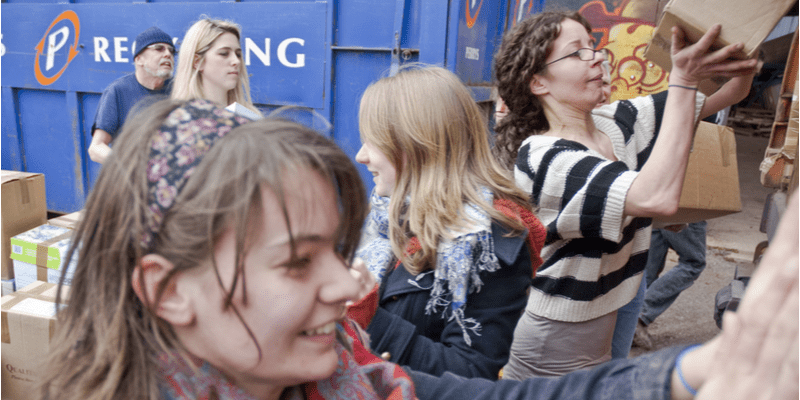
Consumers get more ethical by the year. Modern generations grew up in an age when corporations could not brush scandals under the carpet – they were broadcast to the entire world.
Coupled with a growing understanding of business’ part in the climate crisis and the rise of big charity drives like Comic Relief, this has led to conscientious consumers who will only support socially responsible brands.
Plus, corporations aren’t all heartless. Don’t we as businesspeople also want to feel like we’re contributing to a better world?
One excellent way to prove your ethical credentials, help out good causes, and grow your customer base is to get involved with community projects. Not only is it great PR for your brand, but it also helps you to build lasting relationships with your nearest customers.
In this blog, we take a look at some things to think about when looking for local projects to support:
Remember, time and space are just as valuable as money and products
Community projects aren’t all about creating a big splash. They’re about mucking in and mingling.
It’s one thing to (for example) drive up to a foodbank, bestow a ton of food upon it, and drive away. While your donation will be appreciated, you’ll gather more local customers by devoting time and energy to its building and maintenance.
Think of it like a barn raising. If you’ve not heard of a barn raising, it’s an Amish tradition in which the community comes together to build a barn (or any big structure, really). It could be done in half the time if just a few serious professionals worked at it – but that isn’t the point. The point is that the community works together – however clumsily - and community bonds are strengthened in the process.
If someone wearing your brand’s logo helps to build that foodbank, or puts their name on the cleaning rota, or offers their time to stock control etc., you’ll build much stronger community bonds than if you just make one big donation and then vanish.
Of course, best of all would be if you donate both your time (or space – could the food bank be located on your premises, for example?) and that truckload of food. But if it has to be one or the other, time and/or space win over the big one-off donation every time.
Align your efforts with your product and your brand values
Look for projects that you truly care about, or that you can offer real, tangible support to. Community engagement shouldn’t be about scoring ethics points – it should be about creating something great because you really, truly want to.
Plus, it helps both your brand and the project if your product is genuinely useful.
For example, IQCards offer schools printed fundraising packs that help to provide much-needed school materials. Similarly, Toms Shoes operates a ‘buy one give one’ policy, in which they donate a pair of shoes to a worthy cause for every pair sold.
These examples both take advantage of the resources available to them and help to get the brands’ names out there – all at minimal cost to the company. What’s more, they’re both in line with the ethos and remit of the brand.
If Toms Shoes started, for example, sending food to wildlife sanctuaries rather than shoes to impoverished kids they would still get some recognition for their work – but the impact would probably not be as significant. Because the shoe policy is intrinsically linked to Toms’ own brand and product, it has a lot more legitimacy. People feel like Toms genuinely do care about poverty – that they aren’t just cashing in on a charismatic cause.
So, think about projects that are linked to your brand, your people, your values, and so on. For example, a landscaping company could mow community sports pitches. Printing companies can help out with project signage. Caterers can donate to food banks. Pet shops can campaign for animal welfare causes. And so on.
Build relationships with community leaders
You can’t get involved with community projects if you don’t know they’re happening. Things like keeping an eye on social media are definitely helpful when it comes to community opportunity. However, at a local level the saying ‘It’s not what you know, it’s who you know’ is more appropriate than ever.
Foster relationships with local leaders. People like parish councillors, club secretaries, and even pub landlords are a fount of knowledge about what the community wants and needs. Talk to them about how you can benefit the community.
Local leadership can be a thankless task, and a lack of volunteers for projects is an eternal local problem. If you put yourself forward, you’ll probably find your offer taken up enthusiastically - and you’ll have won new friends in high(ish) places.
Be the change you want to see
If you want to be more than another soulless, faceless business, community engagement is essential. Helping out on a local level may seem like small potatoes – but it can have a surprisingly powerful effect. Investigate your local area and see how you can make a difference.
- Log in to post comments
